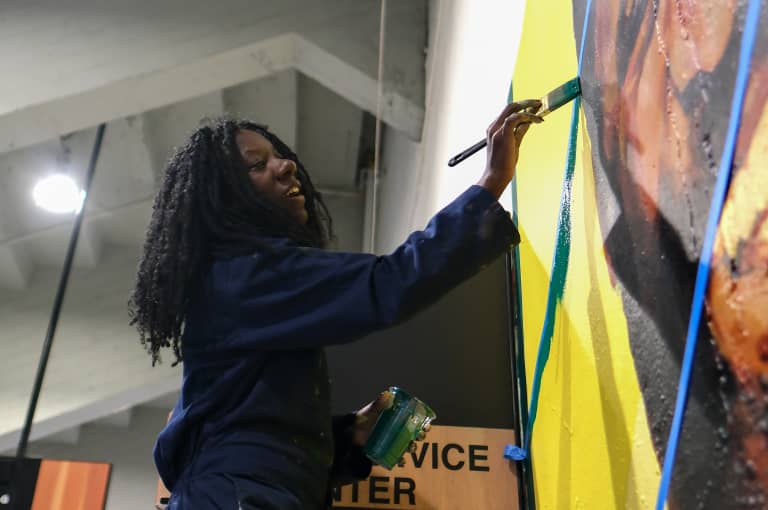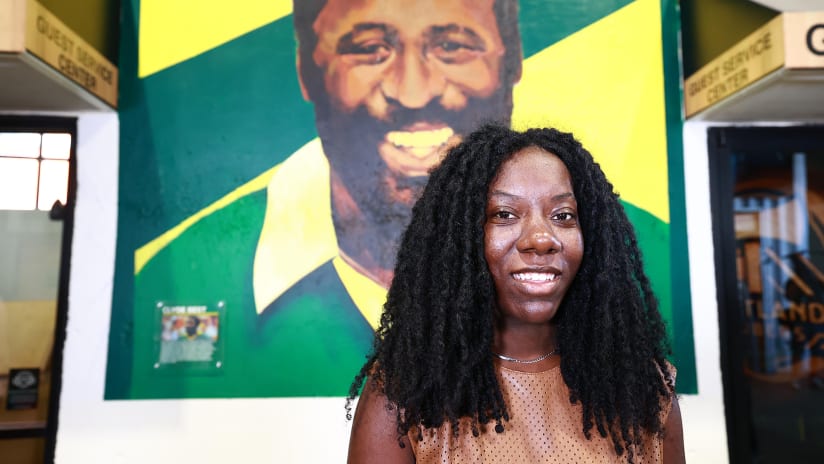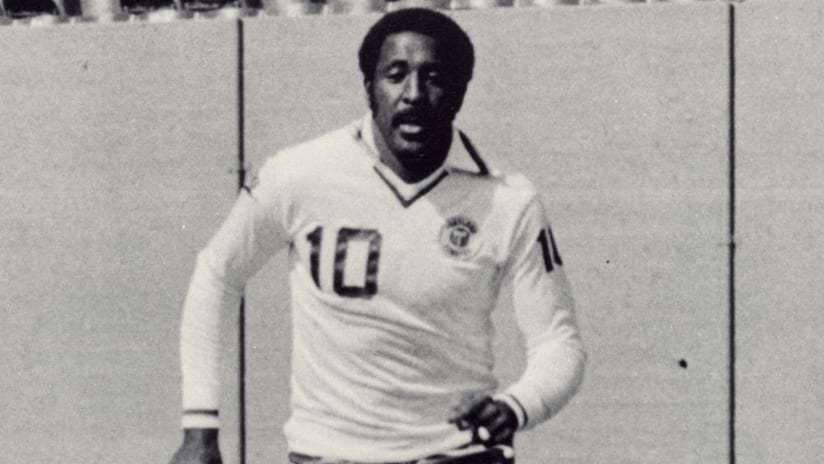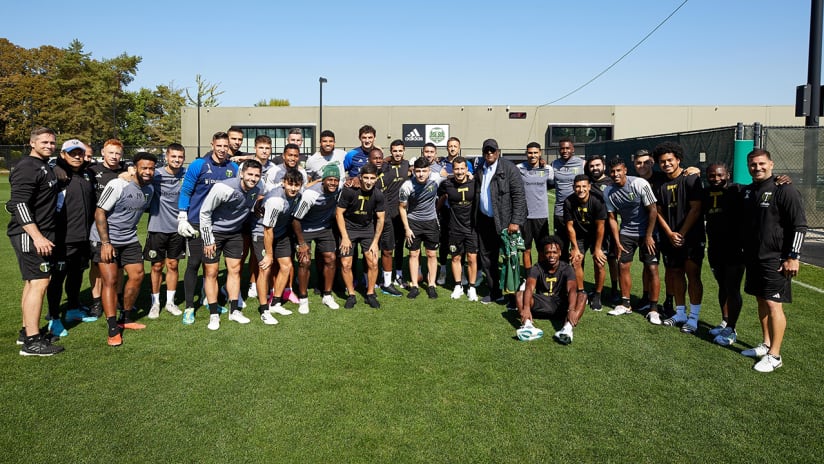More than just a mural, portrait muralist Watkins shares why picture of Best is important
The Portland Timbers recognized NASL club legend Clyde Best with a specially created mural on the north end concourse of Providence Park. Best played for the Timbers from 1977-81, scoring 38 goals and tallying 27 assists in 115 games as a striker – good for second all-time in the NASL era. Before coming to Portland, Best was one of the first Black athletes to play in the first division of English football when he left his native Bermuda in 1968 at the age of 17 to play for West Ham United. An inspiration for generations of Black athletes, Best helped shape the future of soccer worldwide.
Artist Kyra Watkins apprenticed at the age of 15 with ArtWorks Cincinnati before going on to attend the University of Cincinnati's College of Design Arts, Architecture and Planning to study figurative art and portraiture. Since coming to Portland, she has worked with the Portland Street Art Alliance and is known for her work with "Never Look Away," a Pearl District mural celebrating the LGBTQ+ community as well as having her work in the Black Lives Matter Artist Grant Exhibition at the Jordan Schnitzer Museum of Art at Portland State University. Most recently, Watkins was selected by PSU and the Jason Erik Washington Art Committee as an artist-in-residence to create an remembrance of Washington at PSU's Smith Memorial Student Union.
Watkins spoke to us about how she got into portraiture and why this project with Best is important to her.
Why portraiture?
My very first portrait was a self-portrait of myself. And that portrait made me believe that I was an artist and I still have that portrait to this day. And when I look back on it, it's not that great of a portrait, but it inspired me and I just kept at portraiture ever since. I just was bored in my home one day and I drew a self-portrait and I’ve stuck to it ever since.
Let's talk a little bit about this project. How did you get involved and how did you approach this mural of Clyde Best?
I got a call through the Portland Street Art Alliance that the Timbers we're looking to honor Clyde Best and that they were considering me. I showed some of my work and they found my work to be suitable.
Then I got on to designing and I went through loads of pictures of him and we found a picture that we thought really best accurately depicts who he is and also accurately represents who he is, and we started at that base.
When I look at the picture, one thing that strikes me is it's not a picture of him playing. It's a picture of him smiling and it's closeup. Can you talk a little bit about that decision of how you chose this picture to show him in this way?
I think it shows triumph to smile in the face of adversity and is something that we wanted to depict. I think that we can show him running with a soccer ball, but I think his impact is beyond that. I think when people think about being faced with adversity, think about racism and overcoming the many adversities that he overcame, I want them to see his face. And hopefully they remember that impact and see him smiling like he's not defeated. He overcame – he didn't just go through it – he overcame it and came out on top. I hope other Black players, other Black people, other people of color and other marginalized groups that they feel encouraged to smile when they're faced with adversity and know that they too can can overcome any adversity that they face.
Why is public art important to you?
Because it gives access to art to the public. I think the beautiful thing about artists is our ability to, one, sit with the art. It's a beautiful way to express ourselves and I just wish we had more access.
I would love for my work to be seen by people, to be appreciated by people and hopefully lift up the spirits of those who come in contact with it.

This is a portrait of a famous player but also a player who had an impact beyond just playing on the field. How did that affect how you approach the piece?
I think I wouldn't say it necessarily affected the way I approached the project any differently but it impacted me and my feelings for the project. I think the fundamentals of painting stayed the same, but the impact for me, and the impact of the work is just a little bit different. More so how I felt in the process was different than the process itself.
And I think when people who don't know the story, look at the portrait and may see the portrait, but those who know the story, it adds much more sentimental value.
So I think it's more or less that within the process having that story sit with me, impact me, definitely carried me through this process and making it an easier process, a more motivating process. I felt very motivated. Empowered. I feel proud. I hope when people see it, they feel proud. I hope Clyde’s proud and I hope he really understands the impact of what he's done. And I hope this will memorialize that in years to come.















